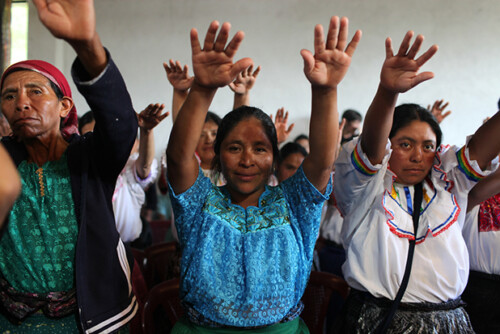Experimental Humanitarianism—The Gates Foundation and Global Public Health
The result of a partnership between a private philanthropic organization, the Gates Foundation, and a government institution, the National Institutes of Health (NIH); a NASDAQ-listed biopharmaceutical company, Gilead; a well-established US-based NGO, Family Health International; and academic researchers in New South Wales, California, and Phnom Penh, the Tenofovir trials are exemplary of an emerging model of collaborative public health research. The landscape of global public health has witnessed some extraordinary changes during the past decade, as private philanthropic foundations, global health alliances, and specialized product development partnerships combining private and public actors have come to play an increasingly prominent role in the definition and funding of health and research agendas. Recently formed private foundations (for-profit and not-for-profit) include the Clinton, Carso, and Bloomberg Foundations. By far the most influential, however, is the Bill and Melinda Gates Foundation, an organization that was founded in 2000 with profits from Microsoft. In barely more than a decade, the Gates Foundation has redefined the field of global public health, reviving long-neglected research and prevention programs and creating new spaces for commercial pharmaceutical innovation in the long-abandoned area of infectious disease research. It has also established programs to subsidize commercial drug markets in the developing world, creating initiatives that substitute economies of scale for selective price reductions without threatening the inflated costs of patented drugs in richer countries. The Gates Foundation is not without its precedents. The Rockefeller Foundation’s International Health Division played much the same role during the first part of the twentieth century, spearheading the mass infectious disease trials of World War II, before it was displaced by state-based development funds and the multilateral WHO at the end of the war. 13 Today, the tables have turned: the Gates Foundation is one of the WHO’s largest donors and by far the largest private donor to the UN’s Global Fund to Fight AIDS, Tuberculosis, and Malaria. 14 It contributes significant amounts of funding to the UN, the World Bank, academic institutions, government health agencies, NGOs, and global health partnerships such as the GAVI Alliance, and exerts a sizeable influence on their public health and research agendas.
The Gates Foundation sees itself as offering much more than a humanitarian response to enduring public health failures. What it also seeks to elaborate is a new model of pharmaceutical R&D. 15 The foundation has close ties with the pharmaceutical industry in general and strategic partnerships with GlaxoSmithKline and Merck in particular. As such, it is less interested in existing generic drugs (much less in existing sanitation or welfare measures) that could improve public health at low cost, than in the development of new, patentable drugs for existing or resistant infectious diseases. A Lancet report on the Gates Foundation published in 2009 found that most of its funding was dedicated to “the development of new vaccines and drugs, much of it high risk” in commercial terms. 16 What this means is that a large proportion of the Gates Foundation’s global public health interventions consist of clinical trials, the mass testing of new drugs in “at risk” populations, in what is truly a form of experimental humanitarianism.
The novelty of this innovation model can be appreciated if one considers that preventative drugs for acute infectious disease have been far from the commercial agenda of the pharmaceutical industry since the late 1960s, when US Surgeon General Dr. William Stewart declared the end of infectious disease in the developed world. Multinational pharmaceutical companies have subsequently abandoned infectious disease to government research centers and instead concentrated on developing drugs for chronic, non-acute and lifestyle diseases such as cancer, depression, allergies, heart disease, or chronic infectious diseases such as AIDS. The idea that drugs could be taken “for life,” on a chronic, continuous and even preemptive basis, is what has sustained the blockbuster business model of the pharmaceutical industry for the past few decades. 17 Today, this model is in crisis as pharmaceutical companies face the prospect of expiring drug patents and declining rates of drug innovation. Fewer and fewer truly new drugs are making it through the clinical trial process, partly because the complexity of chronic disease conditions makes them less amenable to breakthrough drug treatments. Infectious disease, in the meantime, would seem to warrant urgent attention, as emerging, reemerging and drug resistant versions of existing diseases begin to challenge the limits of even the wealthiest public health systems. Yet the pharmaceutical industry has long considered infectious disease prevention—especially in the punctual and curative form of the vaccine—as a self-defeating proposition.
In the last decade, however, the Gates Foundation and its multiple partnerships have intervened to profoundly reshape the landscape of pharmaceutical R&D, effectively responding to the internal failures of pharmaceutical capitalism by offering to subsidize the costs that the industry is unwilling to take on itself. Product-development partnerships use government and philanthropic funding to finance the costs of clinical trials on vaccines, anti-microbials and anti-virals, allowing pharmaceutical companies to reassert their patent rights in the final stages of clinical development, while mass treatment programs use humanitarian aid to subsidize the creation of mass markets for generic and patented drugs. With the help of these multiple subsidies, the pharmaceutical industry has discovered a renewed interest in therapeutic products it had long neglected—vaccines, antimicrobials, tropical diseases—and in mass markets for existing products (tuberculosis, malaria, HIV) which it had long shunned because of their poor profit opportunities.
The Gates Foundation’s clinical development partnerships operate as follows: either Merck, GlaxoSmithKline or one of their licensing partners (in this case Gilead), will donate a drug to a product-development partnership or NGO to test (in this case Family Health International), while retaining exclusive licensing rights to the drug if it proves successful. The Gates Foundation finances the actual clinical trials—now reputed to be the most expensive and time-consuming phase of the drug R&D process—by paying the PDP to test the drug. If the clinical trial fails, the pharmaceutical company will have lost nothing. If it works, the entire clinical R&D process (apart from initial drug discovery) will have been subsidized by public and philanthropic funding. 18 By any standards, this represents an extraordinarily generous form of market subsidy. Pharmaceutical R&D is already subsidized by the US government through NIH funding of basic medical research—it is this model of early stage state research funding that has more or less sustained the fortunes of the biopharmaceutical industry for the last three to four decades. The new product-development partnerships take this logic one step further by subsidizing late stage clinical development also, leaving very little for the pharmaceutical industry to cover except legal, regulatory marketing and distribution costs.
By subsidizing research programs in HIV/AIDS, malaria, tuberculosis and rarer “neglected tropical diseases,” the Gates Foundation may well have silenced longstanding critiques of the pharmaceutical industry and its biased investment decisions. But in the process it is also seeking to foster a new long-wave of pharmaceutical innovation which subordinates the interests of global public health to those of commercial drug development. 19
- David McCoy and Linsey McGoey, “Global Health and the Gates Foundation—In Perspective,” Partnerships and Foundations in Global Health Governance, eds. Owain David Williams and Simon Rushton, (London: Palgrave, 2011): 145-146.[↑]
- McCoy and McGoey, 2011: 152; Owain David Williams and Simon Rushton, “Private Actors in Global Health Governance,” Partnerships and Foundations in Global Health Governance, eds. Owain David Williams and Simon Rushton, (London: Palgrave, 2011): 8.[↑]
- Trevor Mundel, President of the Bill and Melinda Gates Foundation’s Global Health Programme, writes that “global health organizations, including the Bill and Melinda Gates Foundation, are uniquely positioned to move beyond the traditional research and development (R&D) model” centered on non-infectious first-world diseases (2012).[↑]
- Black et al., 2009: 1584.[↑]
- Joseph Dumit, Drugs for Life: How Pharmaceutical Companies Define Our Health, (Durham: Duke UP, 2012.[↑]
- See Stuckler, Basu, King, Steele, and McKee, 2011.[↑]
- I am not, however, suggesting that one should consider the blockbuster model of chronic disease-targeted innovation as completely exhausted. For a nuanced reading of the current conjuncture, see Anne Pollock, “Transforming the Critique of Big Pharma,” BioSocieties 6.1 (2011): 106-18.[↑]





